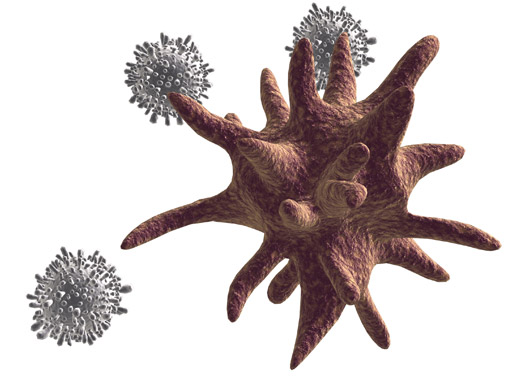How Allergy Drops Work
Sublingual immunotherapy, also called allergy drops, works similar to allergy shots by gradually helping your body build tolerance to the substance(s) causing your allergies. The difference is that the antigen is placed under your tongue in a liquid drop form instead of an injection.
The area under the tongue has the highest concentration of antigen/allergen presenting cells found anywhere in the body. This cell, called the dendritic cell, is the messenger that delivers antigens to the cells that enable allergic tolerance. By consistently delivering allergy drops to this cell daily, the body learns to tolerate things that cause allergic reactions.

We recommend patients take three doses daily for 3-5 years. Treatment length may vary based on allergy severity and type, and how well people follow treatment guidelines. Many people feel better within a few months, but continuing treatment through all phases is necessary to help you stay symptom-free after your allergy drop treatment is complete.
Allergy drops work in three phases:
Phase 1: Initial Oral Tolerance (0-3 months)
During this phase, your body adjusts to treatment and symptoms can improve. Those with minor oral itching will see it decrease as tolerance begins.
Phase 2: Symptom Relief (3 months-2 years)
As symptoms decrease, your body is taking steps toward changing your allergen tolerance. You might feel tempted to stop your treatment because you feel better, but don’t. By continuing treatment, your body can learn long-term tolerance.
Phase 3: Long-term Tolerance (2-5 years*)
As symptoms continue to improve, your body increases its allergy tolerance. This long-term learning is needed for you to stay symptom-free long after treatment is done.
*Depending upon the severity of your allergies, your provider will monitor, adjust, and retest to determine the final length of treatment which varies between patients.
